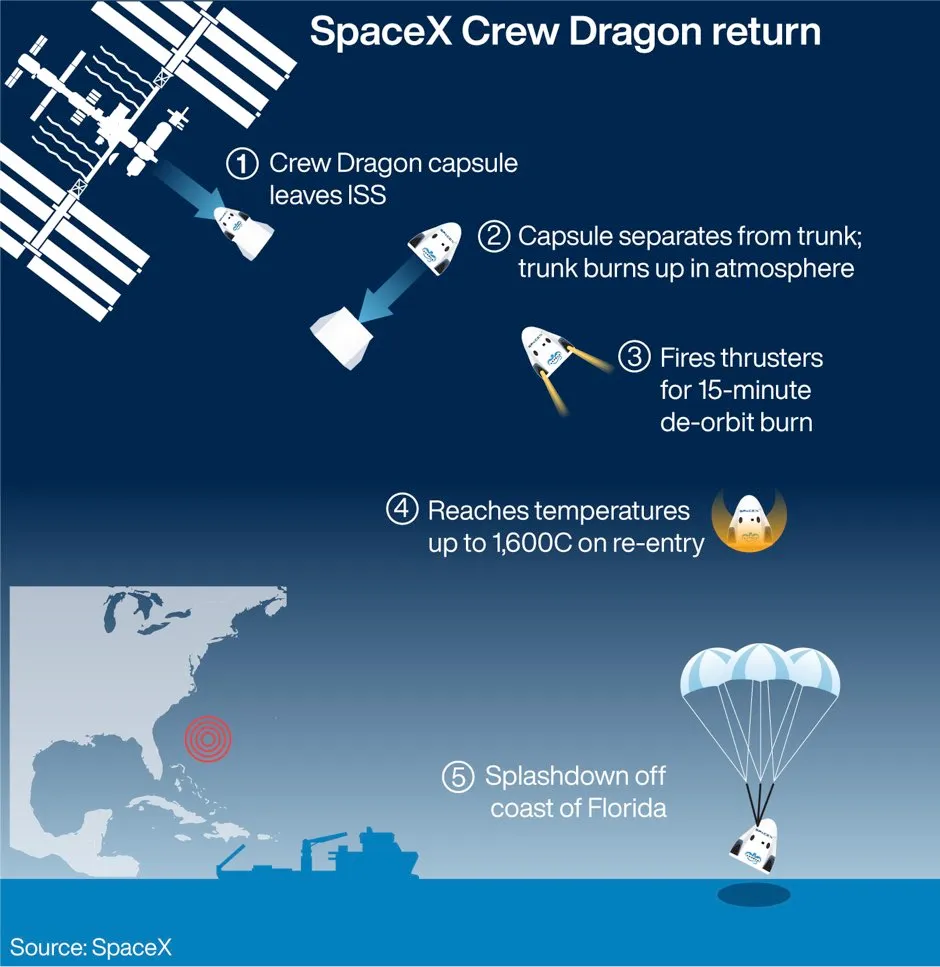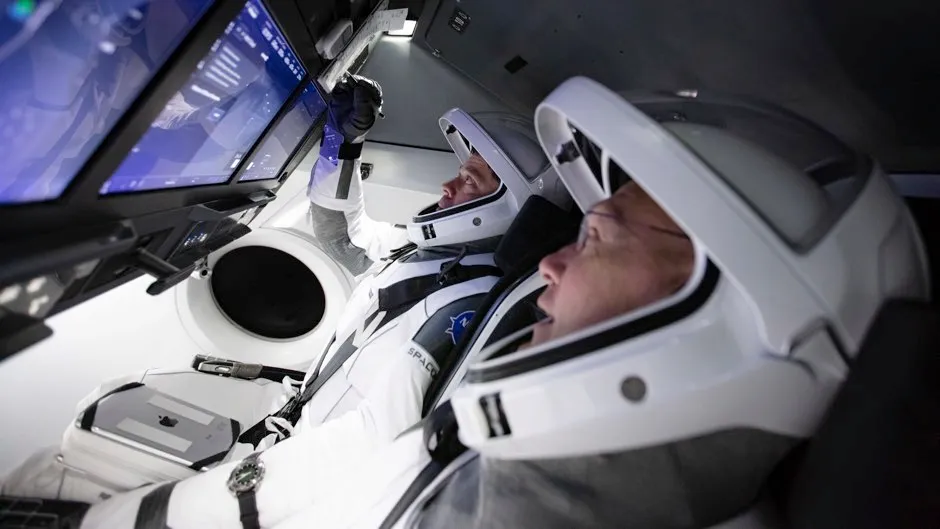NASA astronauts Robert Behnken and Douglas Hurley have said they believe SpaceX’s carrier, the Crew Dragon, is “ready to go” on further missions following the first splashdown return in 45 years.
The pair landed in the ocean, off the coast of Florida, at around 19:48 BST time on Sunday, after a 19-hour journey from the International Space Station.
Speaking at a press conference in Houston on Tuesday, Behnken and Hurley told how the experience was “more” than they had expected, and their “surprise” at how quickly the events unfolded.
Mr Behnken said: “Once we descended a little bit into the atmosphere Dragon really came alive, it started to fire thrusters and keep us pointed in the appropriate direction.
“The atmosphere starts to make noise, you can hear that rumble outside the vehicle and as the vehicle tries to control you feel a little bit of that shimmy in your body.”
Read more about SpaceX:
- How does SpaceX Falcon compare to other rockets?
- How does SpaceX build its Falcon 9 reusable rocket?
- How will private space travel change the way we explore the Solar System?
He went on to say that the vehicle sounded “like an animal” as it entered the atmosphere and how the jolting felt like being “hit in the back of a chair with a baseball bat”.
Hurley also told of how the vehicle was “rock solid”, performing “exactly how it was supposed to”.
The pair made history on 30 May becoming the first people to launch into low-Earth orbit on a commercial spacecraft, built by SpaceX, owned by billionaire Elon Musk.
The mission control said just after splashdown: “On behalf of the SpaceX and NASA teams, welcome back to Planet Earth. Thanks for flying SpaceX.”

Named Demo-2, the mission also marked the first time NASA had launched astronauts from US soil in nine years.
The last time astronauts made an ocean landing was on July 1975 during an Apollo mission.
Mr Hurley said: “Personally it’s significant because I was the last shuttle pilot and the first commander of Dragon and so that’s neat to think about now, I’ll certainly, maybe a year from now, will think a lot more about it.
“But what I think is more important to me is the historical aspect for NASA and certainly for SpaceX.
“For a company that’s only been around for a decade or a little more than that, to build a spaceship that takes crew into orbit and returns them safely, that part of it, the historical aspect, for me is probably most significant.
“And to be part of that, for me, is also by far the most important and one of the most incredible highlights that I’ll have for a professional career.
“To just share in that journey, that odyssey, that endeavour – as we named our ship — was just one of the true honours of my entire life.”

The pair also believe the spacecraft is “ready” to go on further missions.
Mr Behnken said: “From a crew perspective, I think it’s definitely ready to go.
“There are things that can be improved, just like even with the final flight of the space shuttle, I know Doug will tell you there are things that could have been improved.”
Behnken went on to say that he and Hurley would give suggestions on how to make the vehicle more “comfortable and efficient”.
He added: “From a crew perspective I think we’re perfectly comfortable saying that Crew One is ready when they finish the engineering and analysis.”
Reader Q&A: Why can’t we fly planes into space?
Asked by: Dennis Robertson, Sheffield
Planes can and have flown into space for over 50 years – though not the kind you see at the airport. That’s because conventional planes need air for both propulsion and lift, and space is essentially a vacuum.
The first plane to reach space was the X-15, designed in the mid-1950s for the US National Advisory Committee for Aeronautics (NACA), forerunner of NASA. It made its first flight in June 1959, using thin, stubby wings for generating lift and stability while travelling at over five times the speed of sound, plus a revolutionary form of rocket motor whose power output could be varied like a conventional aircraft engine.
In 1963, an X-15 using a propellant of oxygen and ethyl alcohol reached an altitude of over 100km, widely recognised as the altitude at which space begins. The lessons learned were fed into the Space Shuttle programme and today’s commercial spaceplane ventures like Virgin Galactic.
Read more:
